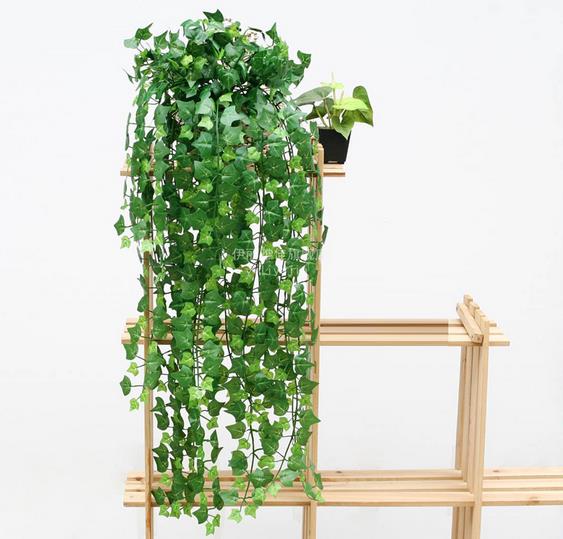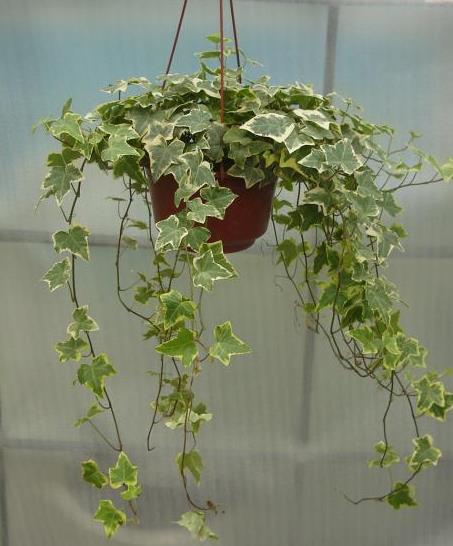Introduction and culture methods of ivy, a foreign plant from Europe
Ivy refers to evergreen woody vines native to Europe, Asia, and North Africa. It is very adaptable to the environment. Like the cooler climate, strong cold resistance, can be used as medicine. Let's take a look at the knowledge of ivy.

I. introduction of Ivy
Ivy, also known as ivy, ivy, is a perennial evergreen foliage plant of the family Acanthopanax. Ivy is a typical shade vine, all woody stems, stems up to 3mur5 meters long, multi-branched, aerial roots on the stem. Delicate branches pilose, rust-colored scaly, leaves alternate, leathery, oil-green smooth. There is another ivy of the grape family, also known as "ivy", but these are two different plants.

2. Cultivation techniques of Ivy
Ivy is not strict on soil, generally use fertile loose soil as pot substrate, such as garden soil and rotten leaf soil mixed in the same amount, can be made of rotten leaf soil, peat soil and fine sand soil with a small amount of base fertilizer, or can be cultivated with water moss alone. Potted plants generally have 5 plants per pot. Usually should be placed in diffuse light, in order to make the leaf color thick green and shiny, especially variegated leaf varieties in the shaded environment, the leaf color is more beautiful. The extreme summer heat must be kept in a cool and ventilated place. The high ambient temperature is disadvantageous to the growth of often green rattan, so it is appropriate to use foliar sprinkler irrigation. If there is insufficient water, the base of the plant is easy to lose leaves; too much watering is also easy to produce rotten roots. The management of water and fertilizer should be strengthened at seedling stage to speed up growth. In the general growing season, especially in spring and autumn, proper fertilization should be applied, liquid fertilizer should be applied twice a month, and it should be noted that the proportion of nitrogen, phosphorus and potassium in fertilizer should be 1:1:1, and the ratio of nitrogen should not be too high, otherwise the flowers and leaves would turn green. In the process of plant growth, attention should be paid to pruning to promote more branches and make the plant shape plump.
1. Soil
Ivy is not strict on the soil, resistant to barren, like moist, loose, fertile sandy soil, avoid saline-alkaline soil. Generally use fertile loose soil as pot substrate, such as garden soil and rotten leaf soil mixed in the same amount, or mixed with rotten leaf soil, peat soil and fine sandy soil with a small amount of base fertilizer, or by pastoral soil, plant ash and a small amount of base fertilizer, plant ash can not only keep the potted soil loose and breathable, but also have more potash to meet the growth of ivy. It can also be cultivated with water moss alone.
two。 Light
Ivy is a typical negative vine, which is resistant to dampness and can grow in full light. Can be cultivated in bright rooms for a long time. In a dark room, it can grow well as long as it is supplemented with light. It grows well in warm and humid climate and is not resistant to cold. When a large number of branches and leaves sprout in spring, regardless of their flowers, leaves and green leaves should be placed in the sun and receive sufficient light, so that the branches and leaves will be luxuriant and sturdy. Usually should be placed in diffuse light, in order to make the leaf color thick green and shiny, flower and leaf varieties in the shaded environment, the leaf color is more beautiful. The extreme summer heat must be kept in a cool and ventilated place.

3. Watering
Be most careful under the plum rain and the high temperature in summer. The ivy placed outdoors during the rainy season should be poured out as soon as there is stagnant water in the basin, so as not to stain and rot the roots for a long time. The high ambient temperature in summer is disadvantageous to the growth of ivy, and the growth is stagnant above 30 ℃, so foliar sprinkler irrigation should be used. If there is insufficient water, the base of the plant is easy to lose leaves, and too much watering is easy to cause rotten roots. You can choose to water early in the morning or in the evening, lest there is a big difference between soil temperature and water temperature, causing adverse injury to the root system, and finally causing the plant to wither and die. Winter into the greenhouse for the winter, indoor to maintain the humidity of the air, not too dry, but the basin soil should not be too wet.
4. Fertilizer application
The management of water and fertilizer should be strengthened at seedling stage to speed up growth. During the growing period, especially in spring and autumn, liquid fertilizer can be applied once a week, or chemical fertilizer can be applied once a month. At the same time, it should be noted that the proportion of nitrogen, phosphorus and potassium in the fertilizer should be 1:1:1, and the nitrogen ratio should not be too high, so as to prevent flowers and leaves from turning green. In the process of plant growth, attention should be paid to pruning to promote more branches and make the plant shape plump. Potted plants for pillars should be often trimmed and heart-picked.
III. The function and use of Ivy
1. Application value
Ivy is mainly used as an ornamental. Most of the land in the south is planted in front of the building, which is an excellent plant material for three-dimensional greening, while there are many potted plants in the north. Due to the variety of leaf shape and color, it is often used as a hanging plant to hang on the hall, corridor and scaffolding, and can stand to decorate the corner of the living room and conference room. Small plants can be used as table decorations. Different species and varieties can also be used as thematic exhibitions, which is unique. In addition, ivy also grows indoors, especially the indoor "negative ion" purifier after decoration, which is believed to have a significant effect on reducing the concentration of harmful substances such as formaldehyde and benzene.

two。 Ornamental value
The leaves of ivy are dark green, and the varieties of flowers and leaves have many different markings or patches with bright and clear colors; there are many aerial roots on the stems, which are easy to grow on rocks, walls and tree trunks, and can be used for climbing or hanging cultivation. It is an ideal material for indoor and outdoor vertical greening. As an indoor shady foliage plant, it can be cultivated in a bright room for a long time. In a dark room, it can grow well as long as it is supplemented with light. When indoor greening is decorated, make drape adornment, put on tall foot flower rack, bookcase top, give a person with natural free and easy aesthetic feeling; also can small pot plant, put on tea table, desk, appear elegant; still can be used as columnar climbing planting, rich three-dimensional feeling.
The above is the knowledge of Ivy. I hope I can help you.
two。 Ornamental value
The leaves of ivy are dark green, and the varieties of flowers and leaves have many different markings or patches with bright and clear colors; there are many aerial roots on the stems, which are easy to grow on rocks, walls and tree trunks, and can be used for climbing or hanging cultivation. It is an ideal material for indoor and outdoor vertical greening. As an indoor shady foliage plant, it can be cultivated in a bright room for a long time. In a dark room, it can grow well as long as it is supplemented with light. When indoor greening is decorated, make drape adornment, put on tall foot flower rack, bookcase top, give a person with natural free and easy aesthetic feeling; also can small pot plant, put on tea table, desk, appear elegant; still can be used as columnar climbing planting, rich three-dimensional feeling.
The above is the knowledge of Ivy. I hope I can help you.
- Prev

The introduction and breeding methods of Tiger Eye evergreen let you grow the green plant of tiger and tiger.
The introduction and breeding methods of Tiger Eye evergreen let you grow the green plant of tiger and tiger.
- Next

The best companion of tea garden Lu Binghua introduction and cultivation methods
The best companion of tea garden Lu Binghua introduction and cultivation methods
Related
- Wuhan Hospital Iron Tree Blooming Result Was Instantly Frightened by the Gardener Master
- Which variety of camellia is the most fragrant and best? Which one do you like best?
- What is the small blue coat, the breeding methods and matters needing attention of the succulent plant
- Dormancy time and maintenance management of succulent plants during dormancy
- Minas succulent how to raise, Minas succulent plant pictures
- What are the varieties of winter succulent plants
- How to raise succulent plants in twelve rolls? let's take a look at some experience of breeding twelve rolls.
- Attention should be paid to water control for succulent plants during dormant period (winter and summer)
- Watering experience of twelve rolls of succulent plants
- Techniques for fertilizing succulent plants. An article will let you know how to fertilize succulent plants.

